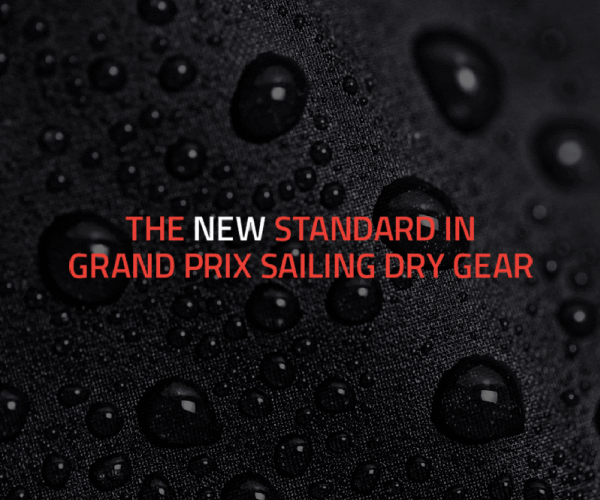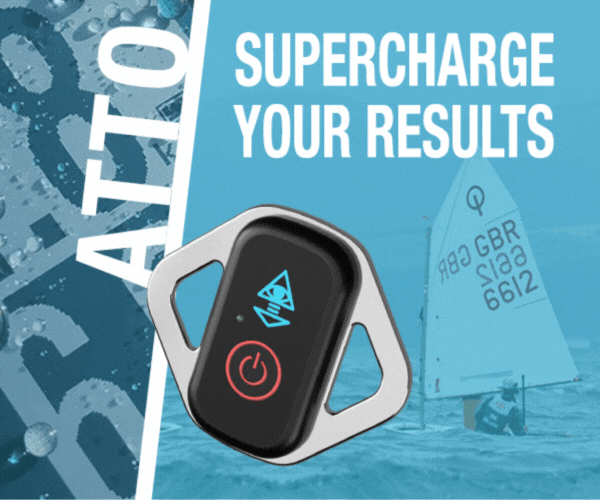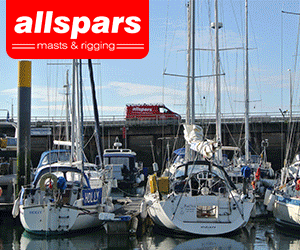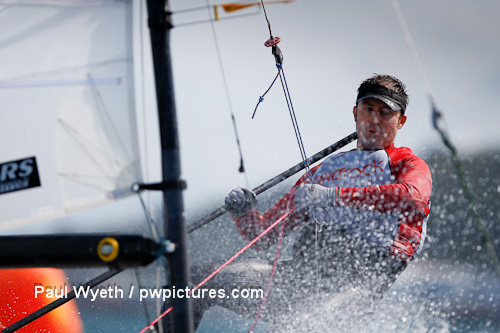
-(1)-202408140552.gif)











Boats for sale
| Laser 28 - Excellent example of this great design Hamble le rice |
 |
| Rossiter Pintail Mortagne sur Gironde, near Bordeaux |
 |
List classes of boat for sale |
Rules Question on Overlaps |
Post Reply 
|
Page <123> |
| Author | |||
RS400atC 
Really should get out more 
Joined: 04 Dec 08 Online Status: Offline Posts: 3011 |
 Post Options Post Options
 Quote Quote  Reply Reply
 Topic: Rules Question on Overlaps Topic: Rules Question on OverlapsPosted: 12 Jul 12 at 7:48pm |
||
Not necessarily, if they were travelling at similar speeds, it could take several seconds from when B's bow crossed the line parallel to A's transom across the back of his rudder, to hitting the mainsheet. In my view, the question is whether A did everything possible to keep clear from that point where the overlap was first established. If B caught a gust and hit A's sheet before A could do anything about it, that is different. |
|||
 |
|||
bustinben 
Far too distracted from work 
Joined: 15 Oct 06 Online Status: Offline Posts: 288 |
 Post Options Post Options
 Quote Quote  Reply Reply
 Posted: 12 Jul 12 at 8:18pm Posted: 12 Jul 12 at 8:18pm |
||
|
My points:
If all A has to do to start keeping clear is pull in the mainsheet, she doesn't need much time/room to keep clear. She must start responding as soon as the overlap is established. If while A is pointing up and sheeting in B hits the mainsheet, B was in the wrong. If she attempts to do nothing and just shouts about room/time then A is in the wrong. The "proper course" thing is a red herring. If B overlaps to leeward it doesn't matter if A has to tack/gybe/derig and swim home, as long as B maintains her proper course. It doesn't mean B is in the wrong if A is unable to maintain her proper course while keeping clear.
|
|||
 |
|||
MrBill 
Newbie 
Joined: 29 Sep 10 Online Status: Offline Posts: 5 |
 Post Options Post Options
 Quote Quote  Reply Reply
 Posted: 12 Jul 12 at 9:21pm Posted: 12 Jul 12 at 9:21pm |
||
|
OK...enough...let me give you my position as boat A:
First, let me define that my "boat" consists of the hull, boom out to leeward, and the mainsheet back to the transom. Thus my boat occupies an approximate triangle. Any boat astern (such as B) of that triangle and sailing faster is an overtaking boat according to the international rules of sailing, and must keep clear. There is no "overlap", as long as B is astern of that triangle even though the bow of B is ahead of the stern of A. If B is outside an imaginary line parallel to the hull of A drawn from the tip of the boom rearward then she is not an overtaking boat, and can establish an overlap and do as she pleases.
One may say that if the bow of B passes the stern of A out near but inside the tip of the boom, then B has an overlap. I say that no, B is still a boat overtaking and must keep clear and the overlap rules are not applicable.
In essence, an overtaking boat has no right to sail over the top of a boat in front (boat clear astern must keep clear of a boat clear ahead) just as in driving, a car behind must give room to the car ahead.
People focusing on the issue of "overlap" are looking too narrowly and forgetting there are other rules than those in the racing rule book. International Rules of Sailing take precedence and B is an overtaking boat.
|
|||
|
MrBill
|
|||
 |
|||
Neptune 
Really should get out more 

Joined: 08 Jun 09 Location: Berkshire United Kingdom Online Status: Offline Posts: 1314 |
 Post Options Post Options
 Quote Quote  Reply Reply
 Posted: 12 Jul 12 at 9:34pm Posted: 12 Jul 12 at 9:34pm |
||
|
No such rule as overtaking boat. Dropped along time ago I am afraid

The triangle does not count either, its a straight line perpendicular to your (boat A) transom Edited by Neptune - 12 Jul 12 at 9:36pm |
|||
|
Musto Skiff and Solo sailor
|
|||
 |
|||
JimC 
Really should get out more 

Joined: 17 May 04 Location: United Kingdom Online Status: Offline Posts: 6662 |
 Post Options Post Options
 Quote Quote  Reply Reply
 Posted: 12 Jul 12 at 10:26pm Posted: 12 Jul 12 at 10:26pm |
||
Absolutely not. This is quite wrong - and there is case (as in court of law) law to prove it. See here. http://www.sailingscuttlebutt.com/news/04/0111pera/ Edited by JimC - 12 Jul 12 at 10:54pm |
|||
 |
|||
Andymac 
Really should get out more 
Joined: 04 Apr 07 Location: Derbyshire Online Status: Offline Posts: 852 |
 Post Options Post Options
 Quote Quote  Reply Reply
 Posted: 12 Jul 12 at 10:41pm Posted: 12 Jul 12 at 10:41pm |
||
Sorry MrBill, there is an overlap as soon as B's bow is ahead of a perpendicular line from the stern of A.
As PeterG states 'if' the contact with boat 'A's mainsheet happened almost immediately the overlap was gained thus preventing A from keeping clear then, and only then, would boat B be at fault. However you state that 'B overlapped A within about 2 feet, and there were just seconds from the overlap to contact with the sheets.' The debatable point would be if A could have kept clear in the 'just seconds' before the contact with the sheets.
|
|||
 |
|||
Andymac 
Really should get out more 
Joined: 04 Apr 07 Location: Derbyshire Online Status: Offline Posts: 852 |
 Post Options Post Options
 Quote Quote  Reply Reply
 Posted: 12 Jul 12 at 10:43pm Posted: 12 Jul 12 at 10:43pm |
||
Sorry Jim, I can't pick up that link.
|
|||
 |
|||
Brass 
Really should get out more 
Joined: 24 Mar 08 Location: Australia Online Status: Offline Posts: 1151 |
 Post Options Post Options
 Quote Quote  Reply Reply
 Posted: 12 Jul 12 at 10:46pm Posted: 12 Jul 12 at 10:46pm |
||
I agree with other posters that rule 17 was probably a red herring: there was no suggestion in the OP that B was not sailing her proper course (but the proper course of the windward boat doesn't absolutely prove the proper course of a leeward boat, even if they are the same one-design)
Jeffers has left out rule 15 which is specifically designed to cover the situation where right of way transitions in an instant, such as this, where B (Clear Astern, keep clear boat, rule 12) becomes B, (overlapped, right of way boat, rule 11) on the instant she crosses the line abeam of A's aftermost point:
Rule 15
ACQUIRING RIGHT OF WAY When a boat acquires right of way, she shall initially give the other boat room to keep clear, unless she acquires right of way because of the other boat’s actions.
'Doing everything possible' is not really the fundamental test. The test is, under rule 15, whether B gave A room to keep clear.
Whether A was doing all she could to keep clear before contact occurred is often a good indicator that B did not give her room to keep clear, but you can have a case such like this Clear Astern to close hook-up to leeward transition, where B hooks up so close that any attempt by A to keep clear will result in immediate contact as her stern comes away as she attempts to steer up. The only thing A can do is hold her course and wait for B to bear away and give her room to keep clear.
It only takes a foot or so more distance between A and B, and A does have room to at least start keeping clear.
Usually, on a Laser, when the main sheet was leading directly to the boom end (rather than drooping in the water), the sheet would be above the foredeck level of the leeward boat, so that contact with the mainsheet would not be likely until the overlap was somewhat more advanced, and A had had more time to keep clear.
That's not to say that A is doing anything wrong by letting her mainsheet droop.
I think the outcome is B, having acquired right of way under rule 11 other than through A's actions has failed to give A room to keep clear and has broken rule 15. On valid protest, B should be penalised. Edited by Brass - 13 Jul 12 at 1:21am |
|||
 |
|||
sargesail 
Really should get out more 
Joined: 14 Jan 06 Location: United Kingdom Online Status: Offline Posts: 1459 |
 Post Options Post Options
 Quote Quote  Reply Reply
 Posted: 13 Jul 12 at 12:23am Posted: 13 Jul 12 at 12:23am |
||
|
I'm glad you said all that Brass - saves me the effort!
But I'd add that the way I read the OP I thought that B really had sail over A's mainsheet.....I am interested in this. Imagine it drooping under water - no contact obvious. 1. A luffs - gap opens. A keeps clear, and has (arguably) proven that B gave room). Now change it: 2. A decides to sheet in as part of his luff - his sheet hits B. Would you find that B hadn't given room - or that 1. was available and therefore A hadn't kept clear. Now try again: 3. A initiates the luff by sheeting in, and without using the rudder - would that change your answer to my question at 2? Matt
|
|||
 |
|||
Brass 
Really should get out more 
Joined: 24 Mar 08 Location: Australia Online Status: Offline Posts: 1151 |
 Post Options Post Options
 Quote Quote  Reply Reply
 Posted: 13 Jul 12 at 1:48am Posted: 13 Jul 12 at 1:48am |
||
I understood the OP saying that B 'sails over' the mainsheet of A to mean that 'sails over and makes contact with'.
While it may be possible for the mainsheet of a Laser to droop and touch or go an inch or two under the surface of the water, I don't think the mainsheet is long enough for it to be possible for the sag in the mainsheet to sink so far under water that another Laser could sail over the sagging portion without almost immediately making contact with the mainsheet.
Even if it was possible for B to sail into the space above the underwater sag of the mainsheet, once A luffs to get clear of B, the 'outer arm' of the sagging mainsheet will be dragged closer to and will make contact with B, thus proving that A did not keep clear, but leaving B with her rule 15 limitation.
Changing course to windward is a seamanlike way to keep clear of B. Sheeting in is a seamanlike action to assist in changing course to windward. If there is contact between B and A's mainsheet when A sheets in, then B has not give A room to take her seamanlike action to keep clear of B. B breaks rule 15.
No, same analysis as in 2.
|
|||
 |
|||
Post Reply 
|
Page <123> |
| Forum Jump | Forum Permissions  You cannot post new topics in this forum You cannot reply to topics in this forum You cannot delete your posts in this forum You cannot edit your posts in this forum You cannot create polls in this forum You cannot vote in polls in this forum |
Bulletin Board Software by Web Wiz Forums® version 9.665y
Copyright ©2001-2010 Web Wiz
Change your personal settings, or read our privacy policy
Copyright ©2001-2010 Web Wiz
Change your personal settings, or read our privacy policy











 Printable Version
Printable Version Delicious
Delicious Digg
Digg Facebook
Facebook Furl
Furl Google
Google MySpace
MySpace Newsvine
Newsvine reddit
reddit StumbleUpon
StumbleUpon Twitter
Twitter Windows Live
Windows Live Yahoo Bookmarks
Yahoo Bookmarks Topic Options
Topic Options